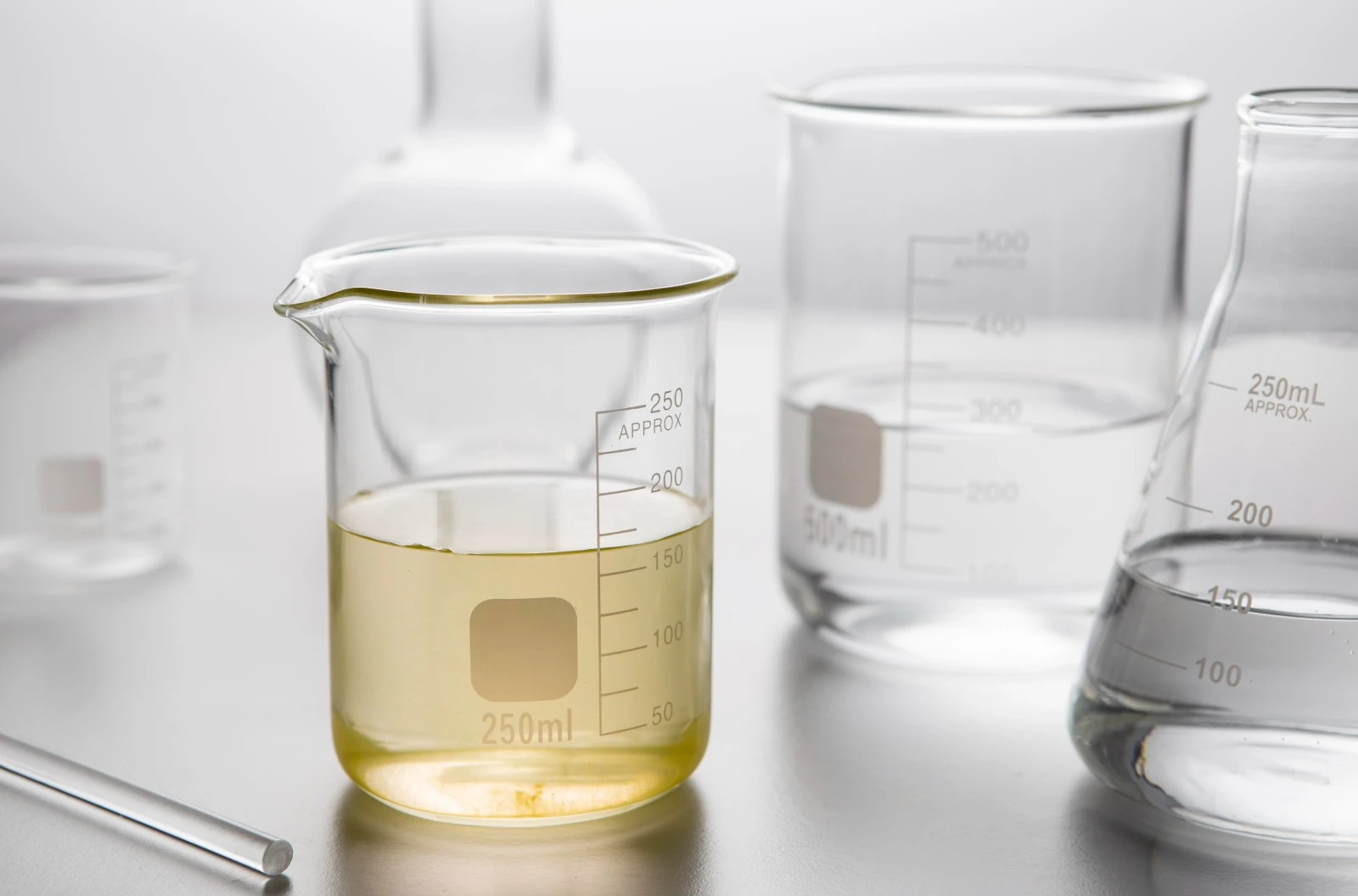Isostearic acid is a branched-chain fatty acid characterized by a molecular structure with branches. This unique configuration results in a chemical formula of C18H36O2 and a molecular weight of 284.48 g/mol
Stearic acid is a straight-chain fatty acid where the molecules pack tightly together. This configuration gives it a chemical formula of C18H36O2 and a molecular weight of 284.48 g/mol.
Enhanced oxidative stability due to branching
Lower oxidative stability
High resistance to oxidation
Moderate resistance to oxidation
Limited thickening properties
Strong thickening properties
Chemical Structure: Isostearic acid is a branched-chain fatty acid characterized by a molecular structure with branches. This unique configuration results in a chemical formula of C18H36O2 and a molecular weight of 284.48 g/mol
Stability: Enhanced oxidative stability due to branching
Oxidative Stability: High resistance to oxidation
Feel on Skin : Lightweight, non-greasy
Crystallization Tendency : Non-crystallizing
Thickening Ability : Limited thickening properties
Chemical Structure: Stearic acid is a straight-chain fatty acid where the molecules pack tightly together. This configuration gives it a chemical formula of C18H36O2 and a molecular weight of 284.48 g/mol.
Stability: Lower oxidative stability
Oxidative Stability: Moderate resistance to oxidation
Feel on Skin : Heavy, more greasy
Crystallization Tendency : Prone to crystallization
Thickening Ability : Strong thickening properties
Isostearic acid is a branched-chain fatty acid with a molecular structure featuring multiple branches. It has a chemical formula of C18H36O2 and a molecular weight of 284.48 g/mol. This unique branched configuration enhances its stability, making it suitable for various industrial and cosmetic applications.
Oleic acid is a monounsaturated fatty acid with a linear structure, characterized by a cis double bond at the ninth carbon. Its chemical formula is C18H34O2 and it has a molecular weight of 282.46 g/mol. The double bond increases its fluidity, making it a key component in animal and vegetable fats and oils.
High, due to its branched structure which resists oxidation.
Moderate, with a linear structure that includes one cis double bond, making it more prone to oxidation.
Remains a stable liquid, non-crystallizing, ideal for formulations requiring long-term stability.
Fluid at room temperature, but can oxidize over time.
Longer shelf life because of its enhanced stability.
Shorter shelf life due to its susceptibility to oxidation.
Chemical Structure: Isostearic acid is a branched-chain fatty acid with a molecular structure featuring multiple branches. It has a chemical formula of C18H36O2 and a molecular weight of 284.48 g/mol. This unique branched configuration enhances its stability, making it suitable for various industrial and cosmetic applications.
Oxidative Stability: High, due to its branched structure which resists oxidation.
Physical Stability: Remains a stable liquid, non-crystallizing, ideal for formulations requiring long-term stability.
Shelf Life: Longer shelf life because of its enhanced stability.
Chemical Structure: Oleic acid is a monounsaturated fatty acid with a linear structure, characterized by a cis double bond at the ninth carbon. Its chemical formula is C18H34O2 and it has a molecular weight of 282.46 g/mol. The double bond increases its fluidity, making it a key component in animal and vegetable fats and oils.
Oxidative Stability: Moderate, with a linear structure that includes one cis double bond, making it more prone to oxidation.
Physical Stability: Fluid at room temperature, but can oxidize over time.
Shelf Life: Shorter shelf life due to its susceptibility to oxidation.
Enhanced Stability: Superior oxidative stability ensures longer shelf life and consistent performance.
Moisturizing Properties: Widely used in skincare for its moisturizing properties, as it penetrates the skin easily.
Emulsifier: Acts as a good emulsifier in formulations but is less stable than isostearic acid.
Isostearic acid is a branched-chain fatty acid with a molecular structure featuring multiple branches. It has a chemical formula of C18H36O2 and a molecular weight of 284.48 g/mol. This unique branched configuration enhances its stability, making it suitable for various industrial and cosmetic applications.
Linoleic acid is a polyunsaturated fatty acid with a linear structure characterized by two cis double bonds. It has a chemical formula of C18H32O2 and a molecular weight of 280.45 g/mol. The presence of multiple double bonds makes it more prone to oxidation, commonly used in food, cosmetics, and dietary supplements due to its essential fatty acid properties.
High, resistant to oxidation.
Stable liquid, non-crystallizing.
Fluid, but highly susceptible to oxidation.
Longer shelf life due to stability.
Shorter shelf life due to oxidation.
Chemical Structure:
Isostearic acid is a branched-chain fatty acid with a molecular structure featuring multiple branches. It has a chemical formula of C18H36O2 and a molecular weight of 284.48 g/mol. This unique branched configuration enhances its stability, making it suitable for various industrial and cosmetic applications.
Oxidative Stability: High, resistant to oxidation.
Physical Stability: Stable liquid, non-crystallizing.
Shelf Life :
Longer shelf life due to stability.
Chemical Structure: Linoleic acid is a polyunsaturated fatty acid with a linear structure characterized by two cis double bonds. It has a chemical formula of C18H32O2 and a molecular weight of 280.45 g/mol. The presence of multiple double bonds makes it more prone to oxidation, commonly used in food, cosmetics, and dietary supplements due to its essential fatty acid properties.
Oxidative Stability: Low, prone to oxidation.
Physical Stability: Fluid, but highly susceptible to oxidation.
Shelf Life :Shorter shelf life due to oxidation.
Versatility: Suitable for a wide range of applications due to its stability and non-crystallizing nature.
Enhanced Texture: Provides a smooth, non-greasy texture, ideal for cosmetic formulations.
Nutritional Value: Commonly used in dietary supplements and nutraceuticals for its health benefits.
Isostearic acid’s branched structure also prevents crystallization at lower temperatures. This characteristic ensures that products remain in a stable, liquid form, which is essential for applications requiring consistent texture and performance.
Longer Shelf Life: The high oxidative stability of isostearic acid ensures that products remain effective and do not degrade over time, providing a longer shelf life compared to other fatty acids.
Improved Texture: Isostearic acid provides a silky, smooth texture that enhances the sensory experience in skincare and haircare products.
Enhanced Stability: Isostearic acid’s stability prevents the oxidation and degradation of sensitive ingredients, ensuring consistent product performance
In comparison with other fatty acids like stearic acid, oleic acid, and linoleic acid, isostearic acid offers superior stability, texture, and versatility, making it a preferred choice in modern formulations.





